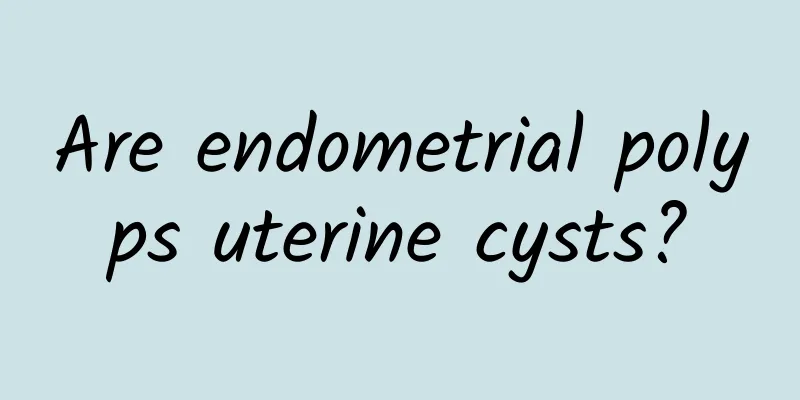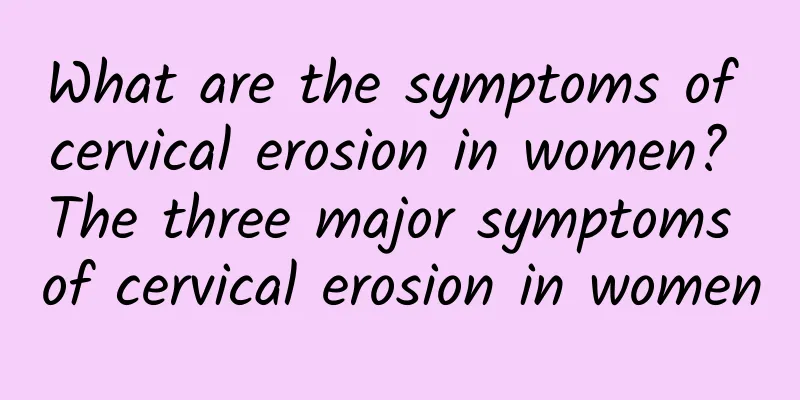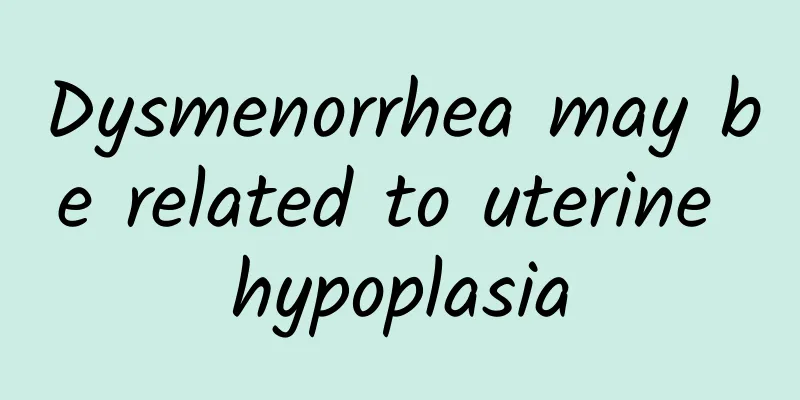What are the types of uterine fibroids?

|
Uterine fibroids are the most common benign gynecological tumors. There are many types of special types of uterine fibroids, but many patients do not know much about them, which delays the treatment of uterine fibroids. So what are the types of special types of uterine fibroids? Next, let's take a look at the types of uterine fibroids. (1) Cell-rich leiomyoma: Its clinical manifestations and gross appearance are no different from those of common leiomyoma. Under the light microscope, the tumor has abundant smooth muscle cells, which are densely arranged, lack fibrous tissue, and have significantly fewer blood vessels. The cytoplasm of the tumor cells is relatively reduced, but they still have the characteristics of smooth muscle cell spindle shape, blunt ends of the rod-shaped nucleus, and the size and shape of the cells are relatively consistent. There is no atypical shape or only a few cells have atypical shape. (2) High-mitotic leiomyoma: The difference from common uterine leiomyoma is that more mitotic figures are seen under the microscope, with the number of mitotic figures increasing to 5-15/10HPF, but there is no abnormal nuclear division, no tumor cell necrosis, excessive cells, cell pleomorphism, anaplasia or giant cells. This type of fibroid is benign, but the diagnostic criteria must be strictly followed. If the patient has undergone myomectomy, as long as the fibroid has been completely removed, women who wish to have children do not need to undergo hysterectomy. (3) Bizarre leiomyoma or atypical leiomyoma: The clinical manifestations and gross specimens are no different from ordinary leiomyoma, only the microscopic manifestations are different. The tumor cells are polygonal or round, with polymorphism, large and darkly stained nuclei, multinucleated giant cells, but very few nuclear divisions, 0 to 1/10HPF. Similar bizarre cells may appear in leiomyoma during pregnancy or when taking high-dose progesterone drugs. This type of bizarre tumor cells usually appear focally in the leiomyoma, often near the degenerative zone, but sometimes there may be a large number of bizarre cells diffused in most of the leiomyoma, but rarely the entire leiomyoma is composed of such cells. If this happens, the diagnosis of bizarre leiomyoma should be cautious. (4) Vascular leiomyoma: The macroscopic tumor looks like an ordinary leiomyoma, and the cut surface is red. Under the microscope, vascular leiomyoma has abundant blood vessels, and the vascular endothelial cells are very obvious. The tumor cells are arranged around the blood vessels and are closely connected to the vascular smooth muscle. There is a transition between the smooth muscle cells of the vascular wall and the leiomyoma cells. There are very few nuclear divisions. (5) Epithelioid leiomyoma: It is a rare uterine fibroid tumor whose tumor cells lose the spindle shape of ordinary leiomyoma cells and become round or polygonal, arranged in groups or cords similar to epithelial cells, hence the name. Leiomyomas that are partially or entirely composed of the above cells are diagnosed as epithelioid leiomyoma. There are many different cell types. Leiomyoblast-type cells are polygonal or round smooth muscle cells with rich cytoplasm, unequal amounts of eosinophilic granules, clear halos around the nucleus, and round or oval nuclei located in the center of the cell. Their cell morphology is similar to that of embryonic smooth muscle cells, so they are also called leiomyoblastoma. (6) Intravenous leiomyoma: It is extremely rare. It is a tumor that grows from uterine fibroids into the blood vessels or from the smooth muscle tissue of the blood vessel wall itself proliferates and then protrudes into the lumen. In addition to veins, lymphatic vessels can also be affected, so it is also called intravascular leiomyoma. Intravenous leiomyoma can extend beyond the uterus. If it is not completely removed, it can extend along the veins to the inferior vena cava, and even to the heart (very rarely). The vast majority of patients also have uterine fibroids or have a history of uterine fibroid surgery in the past. (7) Disseminated peritoneal leiomyoma: It is relatively rare, but has been reported in China in recent years. It is characterized by multiple leiomyoma nodules distributed in the peritoneum, greater omentum, mesentery, rectouterine pouch, and the surface of pelvic and abdominal organs, such as the bladder, uterus, ovaries, intestinal tract, liver capsule, etc. The nodules are grayish white, solid, and vary in size, ranging from 1 to 8 mm in size to 8 cm or larger in size, resembling the implantation of malignant tumors. They are often found during surgery. Patients also have uterine fibroids or have a history of uterine fibroid surgery in the past. The tumor is benign and does not infiltrate or destroy surrounding tissues. Microscopically, the nodules are composed of spindle-shaped smooth muscle cells, with muscle bundles intertwined and arranged in a spiral shape. The tumor cells are uniform in size, without atypia, without giant cells, and with round nuclei or long nuclei with blunt ends. Nuclear division is absent or occasionally seen, and there is no vascular invasion. The histology is benign. Microscopic examination should pay attention to nuclear division to help distinguish between benign and malignant tumors. (8) Benign metastatic leiomyoma: Patients with uterine leiomyoma may have lung or lymph node metastasis. There was once controversy regarding the benign metastasis of uterine leiomyoma. In recent years, it is believed that in rare cases, benign uterine leiomyoma with no or very few mitotic figures can spread to the pelvic or retroperitoneal lymph nodes or lungs. Some patients develop lung metastasis several years after surgery for benign uterine leiomyoma. Examination showed that both the uterus and the metastatic tumors were composed of well-differentiated smooth muscle, without cell atypia, pleomorphism, tumor cell necrosis or abnormal mitotic figures, and no other primary leiomyoma was found in the digestive tract, retroperitoneum or other parts to explain the source of the metastasis. The above is an introduction to the types of uterine fibroids. I hope it will be helpful to everyone. Knowing the types of uterine fibroids will help clinical treatment to avoid misdiagnosing benign as malignant or malignant as benign and giving excessive or insufficient treatment, which will cause adverse consequences. If you have any questions about uterine fibroids, please consult our online experts for answers. Uterine fibroids http://www..com.cn/fuke/zgjl/ |
<<: What are the early symptoms of uterine fibroids?
>>: Who are the people who are prone to uterine fibroids?
Recommend
Can I have massage during threatened miscarriage?
If a pregnant woman shows signs of threatened mis...
What are the typical symptoms of ectopic pregnancy?
The term ectopic pregnancy scares many female fri...
What are the early symptoms of ectopic pregnancy?
If ectopic pregnancy is not treated in time, it m...
What exactly is the "Slimming Pen" that Internet celebrities are going crazy about? Is it possible to lose weight without gaining it back? The doctor will help you solve the problem
The "slimming pen" has been a hot topic...
Adenomyosis can be cured
Adenomyosis is a diffuse or localized lesion caus...
Will less vaginal discharge affect fertility? It may
In fact, although less vaginal discharge does not...
What are the reasons for women's irregular menstruation? Women should be careful of the 4 causes of irregular menstruation
What are the causes of irregular menstruation? So...
End the belly! Keep your belly oil-free and worry-free
Do all girls have a "small belly"? Do y...
What are the symptoms of polycystic ovary
Polycystic ovary is becoming more and more common...
What is the cause of bleeding after a miscarriage?
Artificial abortion refers to the act of terminat...
Do you know the major causes of cervical hypertrophy?
What factors cause cervical hypertrophy? What are...
What are the common symptoms of uterine fibroids?
Uterine fibroids are a common gynecological disea...
How to treat vulvar leukoplakia in the early stage
How to treat vulvar leukoplakia in the early stag...
12 kinds of fruits recommended to eat after miscarriage
After a miscarriage, you can supplement vitamins ...
Things to note after surgery for ectopic pregnancy
Many women think that everything will be fine aft...









